Diocletian's Palace Silver Gate Reconstruction to Feature Accessible Steel Walkway
January 24, 2022 - The Diocletian's Palace Silver Gate reconstruction is planned, which will be the most significant intervention in that part of the Palace in the last 70 years.
The Silver Gate of Diocletian's Palace is now clear from the stands that occupied this area for years. The announcement received a lot of praise and coincided with the removal of the tents from Hrvojeva Street, which obscured the view of the Palace's eastern wall for decades.
But what the city authorities did not announce is that the Diocletian's Palace Silver Gate reconstruction is planned, reports Slobodna Dalmacija. Indeed, it is the most significant intervention in that part of the Palace in the last 70 years, since the 1950s, when the Silver Gate was restored after the Allied bombing in World War II.
On December 30, 2021, the Split Old Town Center and Heritage Department applied for a building permit to the Administrative Department for Physical Planning and Planning and Environmental Protection. The building plot for which the permit was requested covers the northern part of the eastern wall of the Palace, from the northeast tower to the Silver Gate, together with the cadastral parcel of the Emanuel Vidović Gallery.
The project was requested by the City of Split through public procurement in 2018, and the selected designer, architect Ivo Vojnović, explains that they worked on it for a long time with conservators, who eventually gave all approvals to build a promenade on the east wall of the Palace, which includes bridging the Silver Gate.
"Several variants have been changed with the recommendations of the conservator, first of all, Mr. Radoslav Bužančić. In the end, we figured out how to bridge the gap over the Silver Gate. The last variant is to make one steel walkway, i.e., a bridge. That route would be placed behind the current front of the Silver Gate," Vojnović explains.
"The reconstruction of the ancient wall, which does not exist today, would be performed as another support for that bridge. Of what you see as the Silver Gate, little has survived in its original state. Everything was reconstructed after World War II. They have been largely restored. Today, it is not visible because time has done its thing, the stone has turned gray, so there is not so much difference between the new and the old parts. However, especially the inner part of the Silver Gate is completely new, and there used to be a church there," the architect notes.
"Our generation would add another intervention that is missing. The same wall now at the front of the Silver Gate, with the same number of openings, would also appear on the inside of the Palace wall. In this part, a steel patrol would appear that would be contemporary. This is how it is done today; you do not go into historicist mimicry but perform an intervention in a modern way. However, it would be hidden, it would not be so invasive, but it would be inside two walls, only two ends would be visible to it. So the walls will hide that steel bridge, and in that way, we would also contribute to the original look of the Silver Gate. This would solve two problems. We would hide this new steel promenade within two walls and contribute to the perception of the original condition of the Silver Gate," Vojnović points out, adding that the Silver Gate is originally very similar to the Western Gate, almost identical.
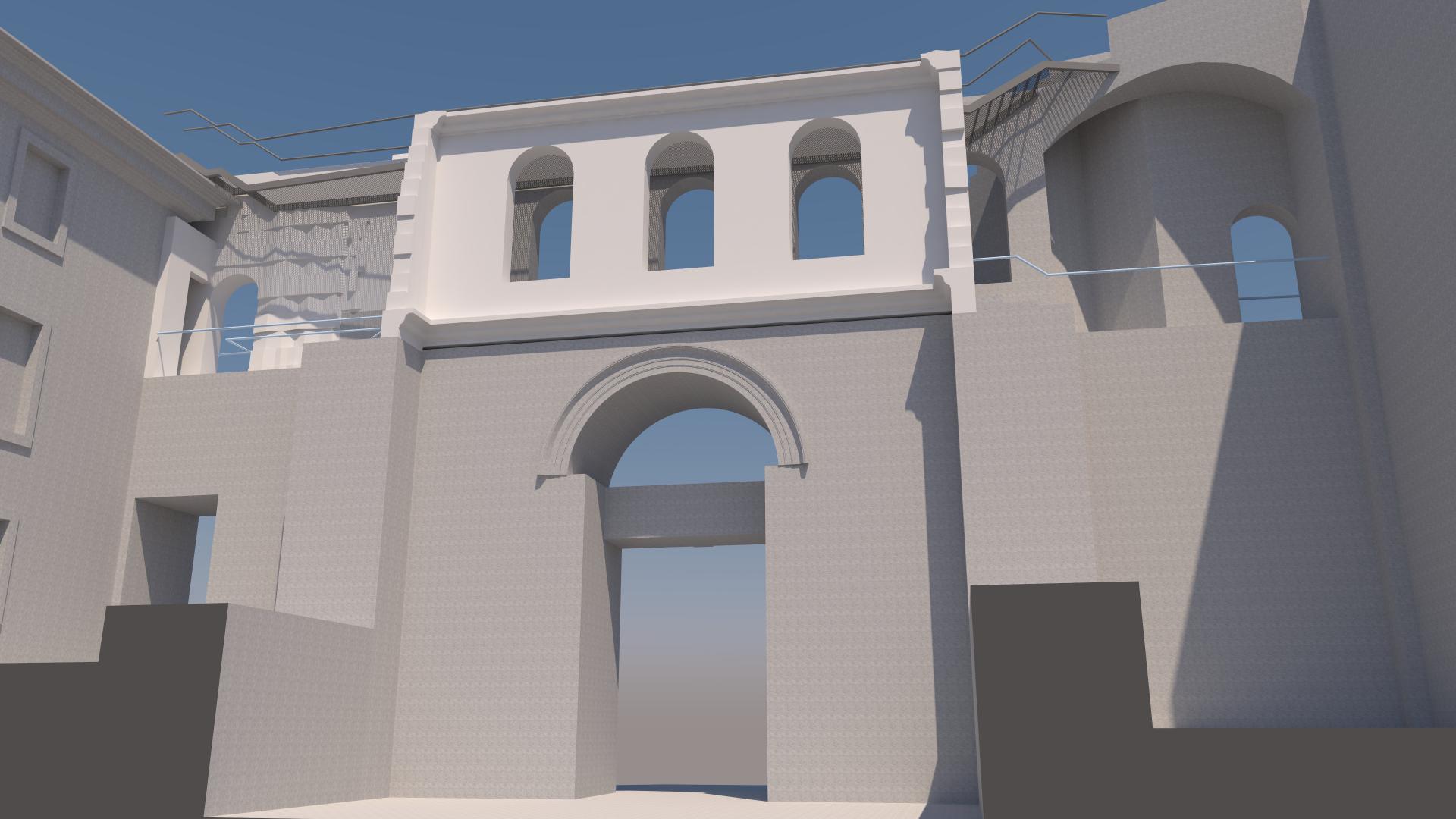
Department for the Split Old Town and Heritage
The intervention would also put into operation an ancient corridor, which cannot be reached today—an inaccessible "terrace" above the central arch leading to the Silver Gate. A new project that would add a wall on the west side of the Silver Gate would also make this former ancient corridor passable. To achieve this, it is necessary to connect with the Vidović Gallery, from where you would enter the old passage and enter the area above the entrance to the Silver Gate.
"If you came there, a beautiful view of Decumanus would open up from that place. With this intervention, that part of the Palace would become accessible to citizens and tourists, as well as visitors to the Emanuel Vidović Gallery, which would thus benefit," adds the architect.
The project also envisages that from the Vidović Gallery, you can access the upper promenade that would run along the east wall of the Palace. Thus, visitors to this Gallery would have access to the promenade that is intended to be reconstructed on the east wall of the Palace. Furthermore, the Vidović Gallery is part of the Split City Museum, which allows visitors to access the north wall of the Palace. Therefore, the city administration instructed the Museum and managing Diocletian's cellars to take care of the tour of the Palace.
"The project covers the entire eastern wall of Diocletian's Palace. In addition, we are working on the project of the Lukačićeva 5 building for the needs of the Split City Museum. Furthermore, a southeast tower with a terrace would be included. With all this, we would get one link that would go through the entire eastern facade of the Palace, from Lukačić, through the southeast tower to the Silver Gate, and up to the northeast tower," the architect announces.
This is not the end of design ambitions. The connection of the eastern Palace wall with the promenade on its northern wall is intended to be solved using a steel bridge. Namely, on that corner of the Palace is the northeast tower, now privately owned. To establish a promenade along the north and east walls of the Palace, the project envisioned the installation of a steel bridge that would bypass the tower diagonally. In this way, one could move from the north to the east wall of Diocletian's Palace. This project was planned from the inside of the promenade, so it would not be visible to those who observe the walls of the Palace from the outside.
"The bridge would remain steel in the sense that it would not be covered with stone," says Vojnović because "modern intervention must remain modern. Such is UNESCO's propositions - it must not be dressed in historicist clothes and thus deceive people, experts, and science. You must stay consistent. Anything new must stand out as such. It must not be adorned and put on some neo-Gothic or other neo-styles, quite the opposite."
Thus, the stone placed on the Silver Gate for the reconstruction of the wall on the inside of the Palace will differ from the original ancient stone in terms of processing.
"New stone turns gray within a few years, but it is always important to see what is originally preserved and what is a reconstruction. It is in our obligation and ethics, we must always point out the difference, not to deceive people," he adds.
As for the Silver Gate, under the steel bridge or footbridge, which will be bridged due to the need for a promenade, an ancient defensive corridor would be reconstructed, which is currently not accessible. It could be accessed from the second floor of the Vidović Gallery. This is why the demolition of one historical layer in the Palace would be carried out, which the conservators allowed.
Namely, right next to the Gallery building in the east wall of the Palace, there is the so-called "Venetian Passage," next to the Silver Gate's entrance arch. Above the "Venetian Passage" is a small house. It is a bridge that led from the building of the former gymnasium, which was before the Vidović Gallery, to the sacristy of the church from Dobrić, demolished after the Second World War. This space is now a warehouse for the Art Gallery, and in the future, a corridor would be built that could lead directly from the Gallery to the defensive corridor. It is intended to remove the roof and the upper part of the house and close the window to allow access to the ancient part of the hallway.
The head of the Split Old Town and Heritage Department, Jasna Jerkov, says that this is a long-term project of restoring the medieval patrol on the walls.
"The documentation for the northern and southern part of the eastern wall was merged and entered the project "Palace of Life - City of Changes." The Silver Gate is not easy to bridge; there have been several proposals, the last one has been communicated with the conservators. Funds have been left in the budget, but it is a question of rebalance and dynamics. We are starting work on the southern part of the eastern wall through an EU project. Unfortunately, we do not have access through Rodrigina Ulica to the north wall, the existing proposal did not pass, and we do not know if it will come to life one day. However, for now, we have the southeast tower and the Vidović Gallery as access points through which the route of the future promenade opens," Jasna Jerkov explains.
When would the work begin?
"Work on the southern part of the eastern wall should begin later this year. Work on the northern part of the eastern wall may begin this year, which may go in stages. But it's too early to talk about it, so don't take my word for it," says the head of the city service cautiously.
There will be a thin metal fence on the promenade in some areas.
"You have to make a compromise somewhere, but it is a reversible detail. What does not endanger a monument? If one day in 50 years it is concluded that it is desecrating the monument in any form, it will be removed. I think this should become a public monument. When a part of the Silver Gate was reconstructed after the Second World War and the church there was removed, it took time for people to get used to that view. Our intervention may not be so great; those who look up will see it. I wonder if we are ready for such a change. I think we are," concludes the head of the Split Old Town and Heritage Department.
However, the restoration of the promenade along the walls of the Palace is not unequivocally understood between conservators, city services, and residents of the Palace, nor is it an issue that is always quickly resolved. Also, no matter how temperamental the public's reactions in Split have always been, they can be reduced to the following. If an intervention is made on the monument just for tourism, there will be fierce criticism. However, if it is concluded that the project was nevertheless undertaken to revitalize the heritage, then over time, it will be accepted that the intervention was justified.
"I have never experienced, and we have been doing this project for a long time, that it is for tourism. Tourism is emerging as one of the possibilities of that famous word "self-sustainability." It is a public space, which you could never see. Recently, a conservator sent me an ad: "An apartment with a terrace on the walls for sale." I mean, private owners own that space. It's all a matter of agreement; it's about visiting regimes. We don't have the walls of Dubrovnik; we have narrow passages on the walls. But they must be available. People will not be denied access to the walls of their houses, but there is no chance that they will remain inaccessible to everyone except them and their guests," Jasna Jerkov believes.
Architect Vojnović claims that Diocletian's Palace's perimeter walls are two and a half meters thick and have their cadastral parcel. Therefore, houses have been leaning against the walls of the Palace since the Middle Ages.
"Although the owners are "buzzing" the wall to get a few more square meters, the city always owns it. So there is no controversy; we go along the top of the wall, which has its own cadastral parcel and is owned by the City. Don Frane Bulić also copied it to the City at that time, and that's how it stands. We walk on the city property, and the houses are leaning against the city wall, and we don't touch them. Tenants coming out on the promenade privatized part of it, put up some tiles, chairs, and so on. The one who has guests brings them upstairs. You cannot forbid a house that has access to use it, it is better to maintain and clean that space, but the City is still the owner and has the right to introduce a regime that decides.
People have fenced off some parts, somewhere there is a dangerous condition for climbing and rot, pieces are falling. Fewer people arranged it. In some parts, there are air conditioners that we will have to separate, somewhere there are roofs that are threatening to collapse. So, we will rehabilitate a good part of the promenade for the common good," concludes Vojnović.
One of the examples where private interests meet with reconstruction projects is the dilapidated building in Lukačićeva 3. The building inspection ordered that constructive remediation be carried out to save the statically endangered house. Still, the Split Old Town and Heritage Department was asked to take the remediation project to consider the promenade aspect. Namely, there were stairs to the promenade where the house was. The house also has direct contact with the Cellars, which is a rarity.
"Now the purpose is not prejudiced during the renovation, but since the house has contact with the Cellars and the promenade, it would be good for the house to be a communication hub. The house is a townhouse, but the rights are claimed. Although surveyors could not get in because of the crowded garbage on the ground floor, we finally managed to communicate to let them in," Jerkov concludes about this neglected property.
For more, check out our dedicated lifestyle section.
Split Census Reveals Reality of Life Under Marjan: Unused Apartments, High Prices
January 23, 2022 - The Split census results revealed that almost every fourth apartment is empty while the prices continue to rise. A closer look at the realities in the city.
According to the new census, Split has 59,947 households and 77,309 apartments, which means that there are 17,362 empty housing units in its area, reports Slobodna Dalmacija.
That is, almost every fourth apartment is empty. If we look at the city without the settlements that administratively belong to it: Žrnovnica, Slatine, Donje Sitno, Gornje Sitno, Kamen, Stobreč, and Srinjine, then Split has 16,069 empty apartments.
This does not mean that all empty flats are also tourist apartments - some owners use them occasionally, and some do not use them at all. But a good flat today is undoubtedly intended for tourism. Several apartments are empty and used only during the season, and prices are multiplying. According to the Central Bureau of Statistics, in the last quarter of 2021, the prices of apartments on the Adriatic were on average 38 percent higher than in 2015.
In parallel with the rise in prices, the number of inhabitants is declining, but empty flats are growing. There were 4,500 in the 2001 census, and only a few years later, at the time of the Split GUP, 6,000 apartments did not have electric meters. Since the last census in 2011, Split has lost more than 16,800 inhabitants and has 17,300 vacant flats. In the meantime, the number of accommodation capacities has increased tremendously.
According to the data of the Split Tourist Board, in 2019, 23,657 beds were registered in households in the city. However, due to COVID, the number of registered accommodation capacities is decreasing, so in 2021 and 2022, the number is the same, and 20,547 of them are registered as household beds.
Housing, on the other hand, is growing. For example, in Mejaši, more precisely around the "Mall of Split" shopping center to the junction with Vukovarska Street, building permits have been issued, or applications for their issuance have been submitted for more than 450 apartments in the last two years.
Although the location and the associated housing conditions could by no means be called elite, this is not an obstacle to the rage in prices. On the contrary, the public was amused and shocked by the ad in which about 4,000 euros per square meter were demanded for a 14-square-meter studio apartment in that neighborhood.
However, children attend the overcrowded Mejaši Elementary School in three shifts. The head of the Split Social Services Department, Mate Omazić, told Slobodna that the City has problems finding a suitable plot of 10,000 square meters to construct a school with a hall in Kila, in the Mejaši district where POS apartments were built.
This example clearly shows why young people are leaving. Namely, affordable apartments are not built, while they are costly in favorable locations and are constructed primarily for tourism or for the temporary stay of those with deeper pockets.
Apartments in poorer locations, which are bought mainly by people in Split today, are too expensive considering what the location offers. Moreover, the environment in which such new buildings are located is poor in infrastructure, greenery, and public facilities. Therefore, the overall impression of such ambiance seems relatively poor compared to the money required to buy real estate, especially when compared to Split in the second half of the 20th century when the city's development was meaningfully planned.
An expert in spatial planning and a member of the Spatial Development Council in the competent ministry, architect, and urban planner Gojko Berlengi predicted in an interview with Slobodna that there would be more than 10,000 vacant apartments in Split in the census. As one of the reasons why apartments under Marjan are expensive and empty, he points out the tax policy, which is not fair to the owners of hotels and other forms of accommodation.
"How many times bigger is New York than Split? And there are only four times as many apartments in private accommodation? They are taking measures to limit the number of flats and require apartment owners to be domicile residents. In our country, the privileged tax on apartments was introduced as a reasonable social measure to help households with a surplus of space and a lack of income. In the end, it turned out that a man came, for example, from Varaždin, and invested in five apartments in Žnjan. He uses a privileged tax, competes with hotel owners, and has a very short season that produces huge peak loads, which the City needs to deal with, from traffic, water, sewage, waste disposal... When entering into a thorough calculation of all negative externalities, cities, and municipalities are thus de facto at a loss," explains Berlengi.
"I am interested in the extent to which the Split Development Strategy and the Agglomeration Strategy, as well as the County Development Plan, will answer such questions. For example, what does one zone with apartments on Žnjan mean to Split? How much tax revenue does the City carry per hectare, and how much does it cost in utility equipment and maintenance? We have vacant apartments and people who have not resolved the housing issue, and at the same time, the city space is being spent on building overpriced real estate. There are public policies that can address this, resulting in these apartments being used for housing and being offered on the market at normal prices, especially if there are more than households. Tax measures and other public policies from the existing fund should activate apartments in the function of housing," Berlengi believes.
Berlengi adds that it is logical that the tax for this activity should be low, but only for people who live on the islands and the coast, where they have one or two apartments. But it is not logical, he says, that as a consequence, it starts to turn into the construction of apartment houses on Žnjan, which are empty for most of the year.
"Half of them are summer apartments, some of a higher standard. When you come, you find the key. You leave it in the mailbox, everything is anonymous, and at the same time, it goes under the lower tax of accommodation in a family household, which should be an incentive for local residents. It is not logical to reward rich people who are not domiciled. Numerous cities worldwide handle things like this, so you can’t rent if you’re not domiciled. In addition, they limit the number of rental days per year and thus stimulate year-round rental. We want to equalize these forms of renting so that the owner does not have the advantage of renting an apartment to tourists compared to year-round rent to families," says Berlengi.
As a result, the number of apartments has doubled since 2012, although the Tourism Strategy foresaw that apartments in Croatia would remain in that number. The infrastructural load in the summer is vast because from Trogir to Omiš, there are 80,000 beds in apartments.
Will the real estate bubble burst? Berlengi believes that valuable real estate is always on price. However, at the other end of the spectrum are numerous lower-quality properties on the city's outskirts that could be a problem.
"Anyone who has invested money in them at one point may have difficulty cashing in if, of course, there is not as much demand for housing due to fewer residents and households. Dwellings have become a commodity that preserves the value of the property. However, it is like a financial pyramid, and any such pyramid eventually collapses. I don't see how this could survive in the long run if you don't live in those apartments and if a normal real estate tax is introduced, so unused real estate becomes an expense. But our state is slow, and perhaps the problem is that those who decide on it have too much real estate themselves. For now, the state de facto supports the rentier mentality. It sterilizes financial capital for productive investments by buying unnecessary real estate; for example, we have thousands of hectares of uncultivated land, and we import billions of euros of food," adds Berlengi.
"Split has increased the number of apartments by five to six times. There are almost 10,000 apartments in Split, about 8,000 in Vienna, about 50,000 in Paris, and about 40,000 in New York. I see this as the primary form of pressure on coastal settlements and space, but also on the affordability of housing because apartments are becoming too expensive, which with already negative demographic trends is driving local people out of cities," concludes Gojko Berlengi.
For more, check out our dedicated lifestyle section.
14 Volotea Flights to Split and Dubrovnik Airports this Summer
January 21, 2022 - The latest flight news to Croatia as 14 Volotea flights to Split and Dubrovnik airports will run this summer.
Spanish low-cost airline Volotea is planning 14 scheduled flights to two Croatian airports this summer, reports Croatian Aviation.
Namely, Volotea will operate 14 seasonal routes from France, Italy, and Greece to two Croatian airports - Split and Dubrovnik, in the summer flight schedule, which starts in late March.
Although the airline planned more lines to Split and Dubrovnik, the start date has been postponed from season to season due to the pandemic. The three previously announced lines will not be in operation this year either. Moreover, the airline has removed them from its list of destinations, so it is to be assumed that they will not be launched in the near future.
Nevertheless, the summer program for Croatia looks significantly better compared to 2021 operations. There are several weekly rotations on most lines, but it should be noted that the company has confirmed that reductions (or increases) in the announced schedule are still possible, and this will depend solely on the pandemic that directly affects passenger demand.
Volotea plans to travel to Dubrovnik from:
Lyon, from 16.04., 2 times a week, Tuesdays and Saturdays,
Nantes, from 09.04., 3 times a week, Tuesdays, Thursdays, and Saturdays,
Bordeaux, from 16.04., 2 times a week, Wednesdays and Saturdays,
Toulouse, from 23.04., 2 times a week, Wednesdays and Saturdays,
Marseille, from 09.04., 2 times a week, Tuesdays and Saturdays,
Bari, from 06.07., once a week, Wednesday,
Athens, from 29.05., 2 times a week, Wednesdays and Sundays.
Volotea plans to travel to Split from:
Venice, from 27.05., 2 times a week, Tuesdays and Fridays,
Lyon, from 17.04., 2 times a week, Wednesdays and Sundays,
Nice, from 13.04., once a week, Wednesday,
Marseille, from 10.04., 2 times a week, Wednesdays and Sundays,
Toulouse, from 17.04., 2 times a week, Wednesdays and Sundays,
Bordeaux, from 17.04., once a week, Wednesdays,
Nantes, from 10.04., 2 times a week, Wednesdays and Sundays.
Volotea is one of the few airlines that flies from a number of French cities to Croatia during the summer season. Air France and Croatia Airlines, as well as many low-cost airlines, connect Croatian airports and several airports serving Paris, but Volotea offers the possibility of direct travel between Split and six French cities, which is certainly important in terms of tourism.
On all 14 routes to Croatia in the upcoming summer flight schedule, Volotea plans to use its A319 and A320 aircraft with a capacity of 150 and 180 seats in the passenger cabin, respectively.
For more on flights to Croatia and other travel announcements, make sure to check out our dedicated travel section.
Split Women Entrepreneurs Check In - A Stylish Success!
January 21, 2022 - The first Split Women Entrepreneurs Check In was held at Heritage Hotel Santa Lucia on Thursday, January 20, as the ultimate networking event for anyone interested in lifestyle and new business connections, all while indulging in a tasty brunch.
The Women's Entrepreneurs Check-in is organized under the Lifestyle Check-in brand, which organizes a series of B2B & B2C events focused on international fashion, beauty, and lifestyle companies, held in mesmerizing venues such as galleries, yachts, and hotels. Thursday's event was thus held at Kavana Central, part of the chic Heritage Hotel Santa Lucia, located at Narodni trg 1 in Split.
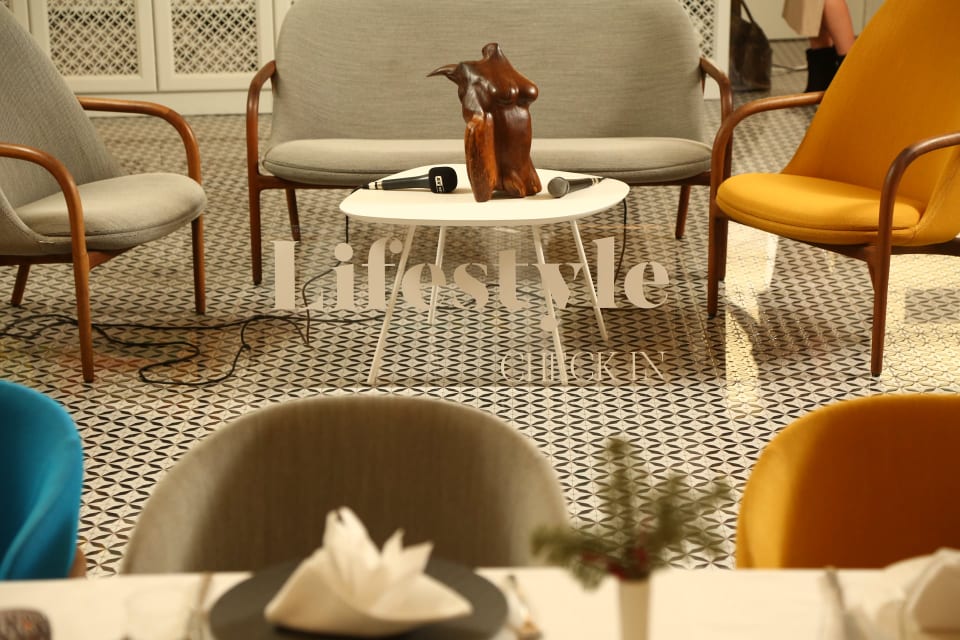
The Women Entrepreneurs Check In aims to raise awareness about women entrepreneurs and affirm women’s role in the Croatian and Dalmatian economies. Speakers and journalists from Croatia, Austria, and Romania joined the event through a panel discussion about women's entrepreneurship to celebrate great business minds and up-and-coming entrepreneurs while highlighting the influential role women play in the business community.
In addition to bubbles and brunch, the event featured 3 different panels with questions directed to the audience once the speakers finished. The breaks between each panel included artistic moments, with acoustic music by Michelle Rowsell, live portrait paintings by Sunčica Kuzmanić Perišin Tomljanović, and artwork by Esther Canata.
The audience was also encouraged to use the breaks to network, test the Makeover Polyclinic Beauty Corner products, and enjoy the stunning reclaimed wood sculptures by Earth Wind Desire and Pierre Lang jewelry from Austria.
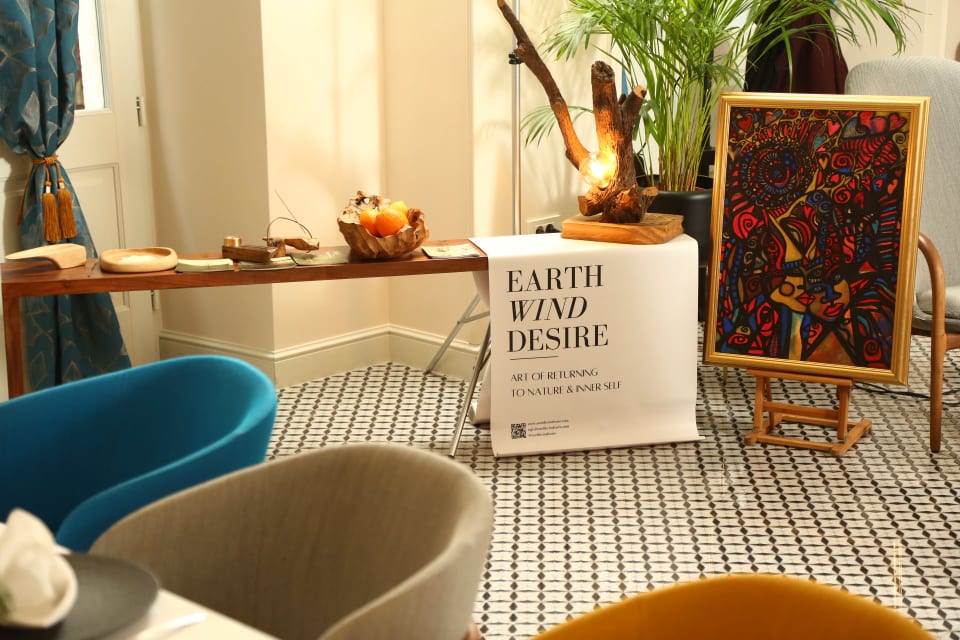
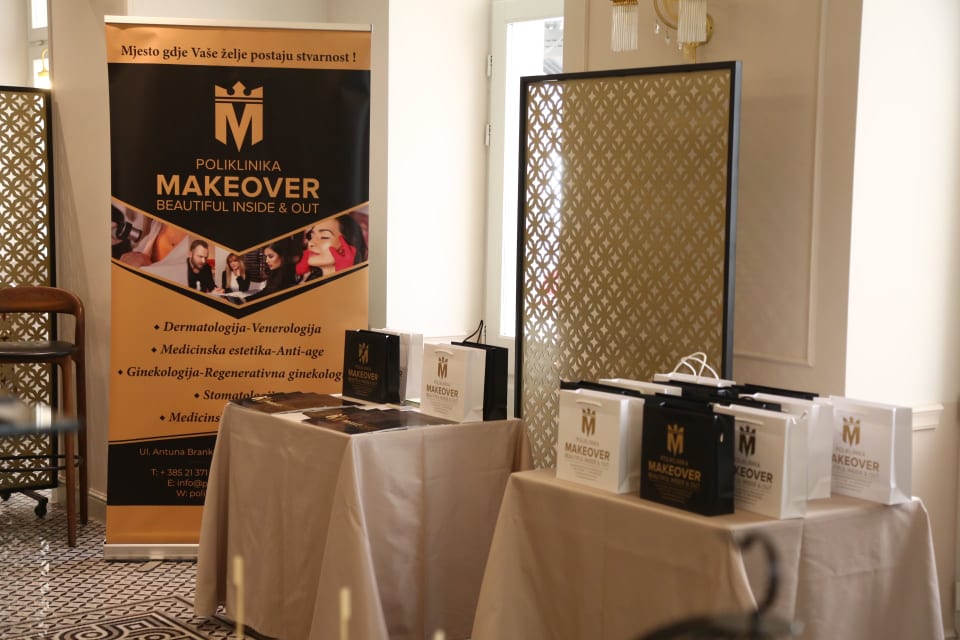

The Women Entrepreneurs Check In was introduced by Total Croatia News COO and event moderator Daniela Rogulj, who thanked everyone for joining and highlighted the importance of celebrating women, networking, and dressing up on a January Thursday in Split.
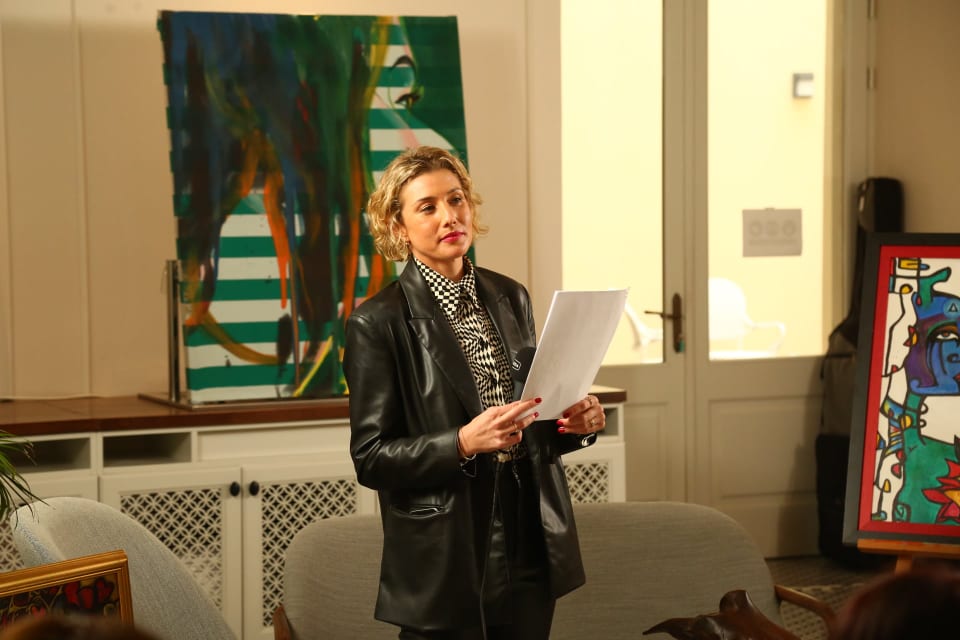
The opening words were shared by Joze Tomaš, Director of the Split County Chamber of Commerce (HGK), and Nevena Čikeš, manager of Heritage Hotel Santa Lucia. Tomaš reiterated his support for women business owners through HGK and various projects and promised to continue fighting for equal rights for women in Croatia. Čikeš stressed the importance of unity and pledged her support to Lifestyle Check In for future events.
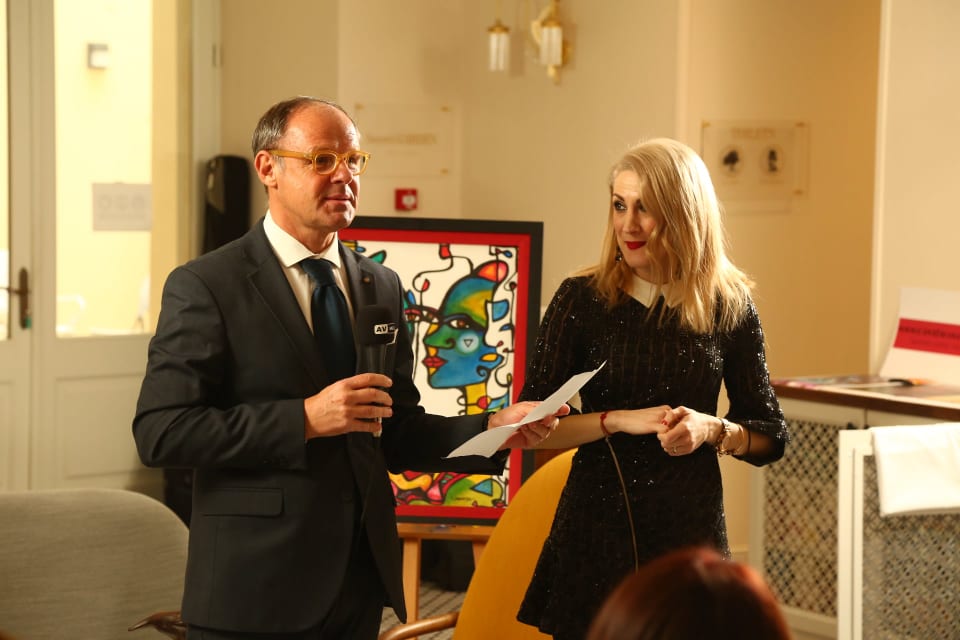
The first panel discussed businesswomen in Europe and Croatia, the importance of connection, and social entrepreneurship, with speakers Tash Peričić and Barbara Marković.
Originally from New Zealand and living in Croatia for almost 8 years, Tash Peričić has worked in hospitality and tourism for 17 years, including managing Gordon Ramsay’s Michelin-starred restaurant – ‘Maze’ in London. Tash has worked in the field of Leadership based on Emotional Intelligence, as a writer for TCN, and more recently started giving guest lectures at Aspira University, delivering training for luxury yachts, and teaching the stewardess course for Atlantis Yachting Academy thanks to her experience working on yachts in Croatia for almost 10 seasons. Tash has also created an online community to support women which now includes nearly 600 members in Dalmatia.
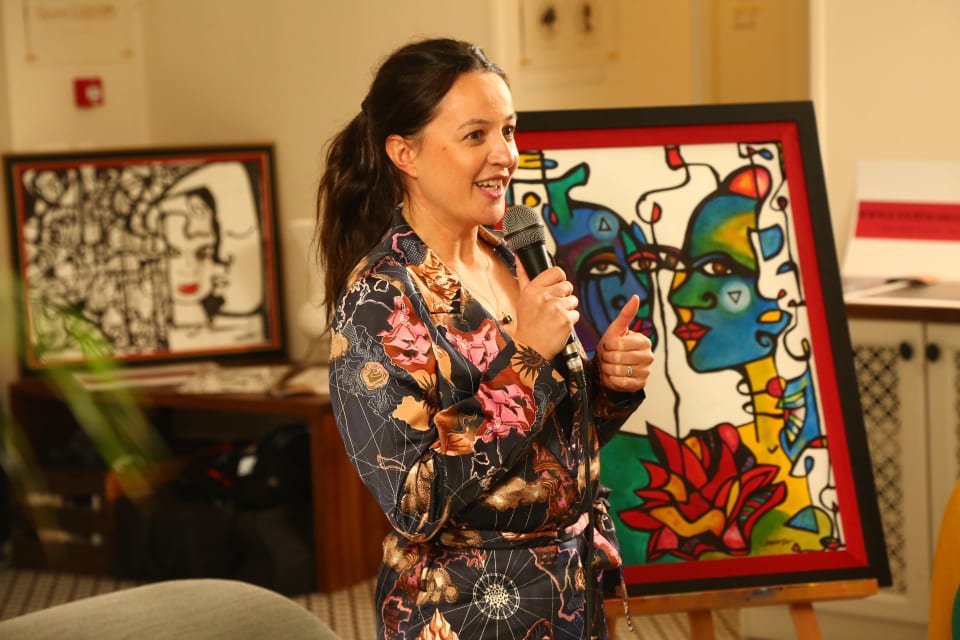
Tash spoke about her ethos being connection, collaboration, and community, how women's communities differ in the various parts of the world she's lived, and how it is imperative to dismiss competitive mindsets and instead support each other, which she has discovered through the community she has built in Dalmatia.
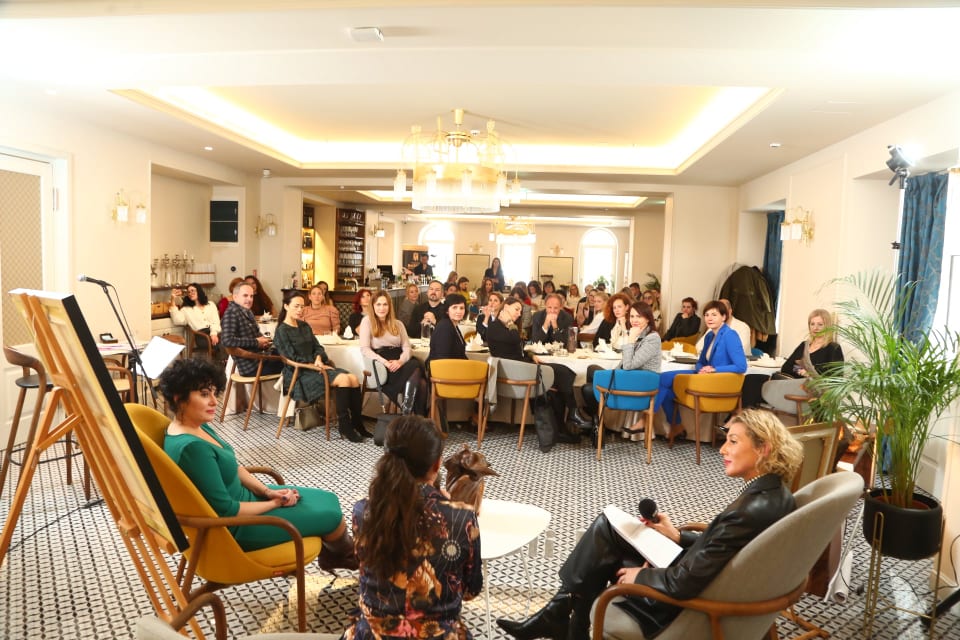
Barbara Marković has worked in different areas of tourism for over 20 years. She also spent 10 years in the United States, working for Marriott and the cruising industry, mainly in hotel operations. She has worked on projects with private accommodation owners for the last ten years. Barbara is the president of the Croatian Family Accommodation Association on a national level and has presented the project in the media and locally to assist and help private accommodation owners as much as possible. She also owns the Dalmagic travel agency, mainly specializing in Split county cruises, tours, and accommodation services. She also works part-time for the tourist boards of Croatia and Split-Dalmatia County as an educator for accommodation business owners.
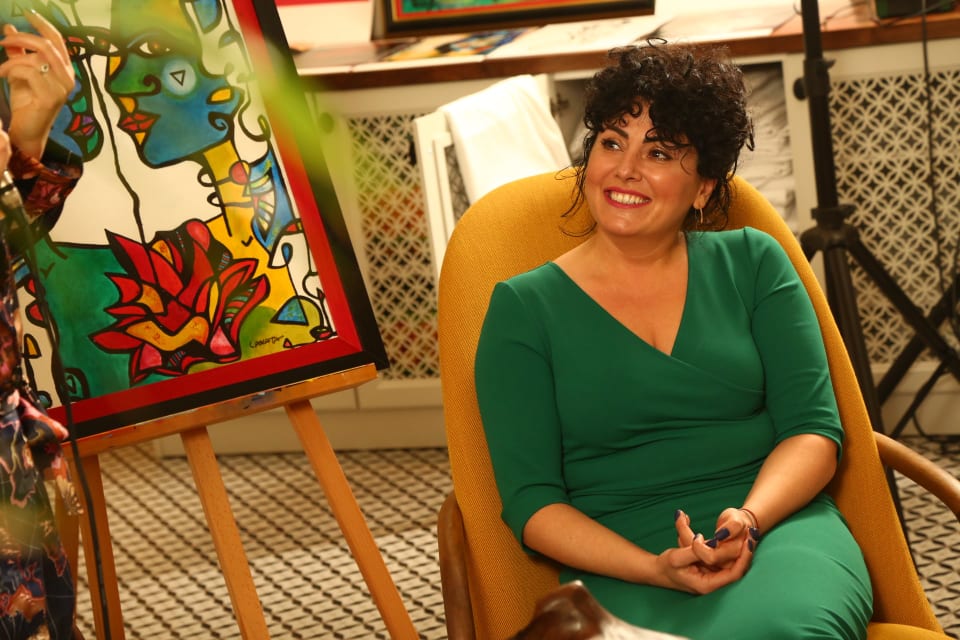
Barbara discussed the importance of being a good host, how he has adapted as a businesswoman to Split's rapidly changing tourism environment, and how we need to honor quality over quantity.
The second panel touched on business trends and how we can design our feminine future through projects led by Hildegard Brandl and Cornelia Rieger.
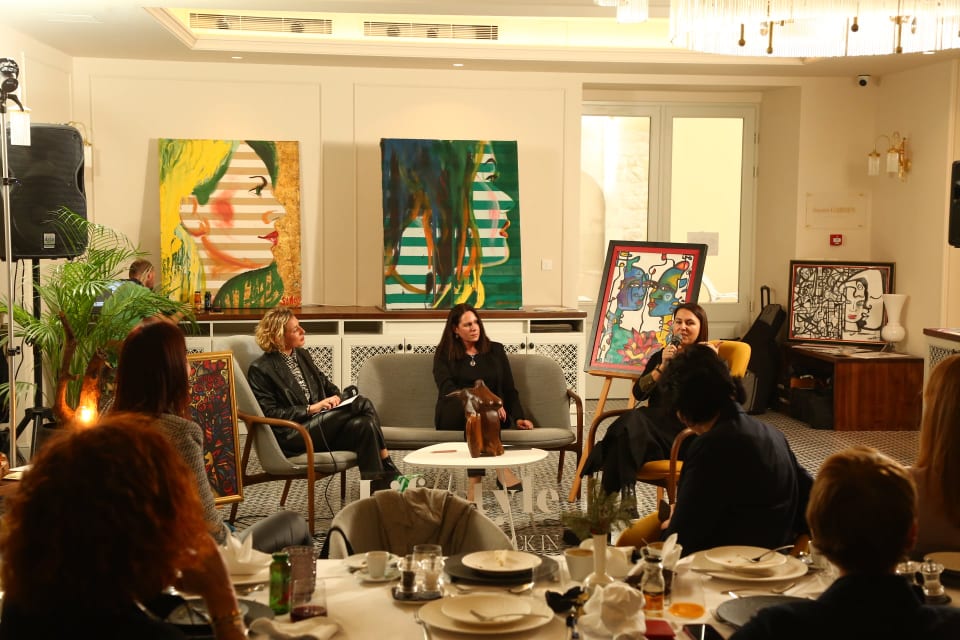
Originally from Romania, Hildegard Helene Brandl studied architecture in Bucharest, graduated in Dortmund, and set up her first architecture office in Venezuela. In 2009, she returned to Europe and opened UNITH2B Architects in Romania with her partner Anca Sandu in Romania. Hilde is strongly involved in volunteering projects - she is a member of the Romanian Business Leaders Association, a member of the AHK Romanian-German Chamber of Commerce and Industry, and the leader of the ANTREPRENORESTI project - Adopt a village. She is currently the President of the Bucharest Entrepreneurs Organization and Coordinator of the National Business Environment Commission of the PNL. As a founding member & board member of the Association of Romanian Architectural Societies, she promotes public policies and leaner legislation within the construction domain. She is one of the founding members of ROBELO - Romanian Best Locations - a platform for exceptional tourist locations in Romania and passionately promotes the unique, wild landscapes and experiences that Romania offers. Hilde spoke about her unique experience as a woman in the male-dominated political world and the most significant lessons she's learned.
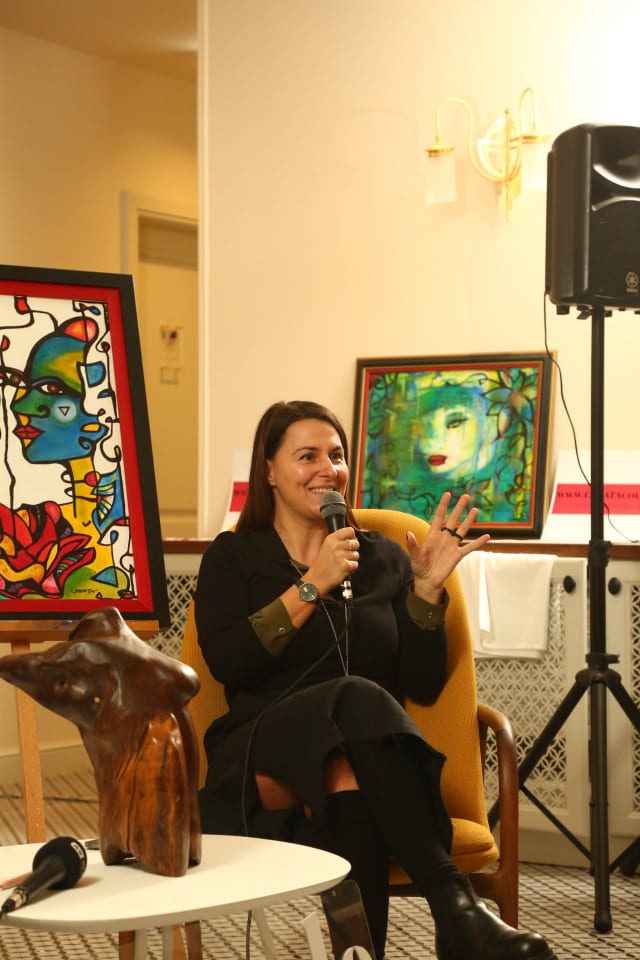
"I constantly ask myself - would it kill me? No. So I do it. Anything that doesn't kill us makes us stronger. Saying yes to opportunities, even in areas like politics which was unfamiliar to me, is one of the biggest reasons I've grown and been successful in the business world," said Hilde.
Cornelia Rieger has been a businesswoman in Austria since 2003. She has worked as a consultant in the Back Office Work for Entrepreneurs and a Mentor and Trainer for Women in Leadership. She has also been part of the Real Life Academy since 2018, Partner Agency "We bring together, what belongs together " since 2020, and the Summer Rose Community - Inner Circle for successful People and Entrepreneurs.
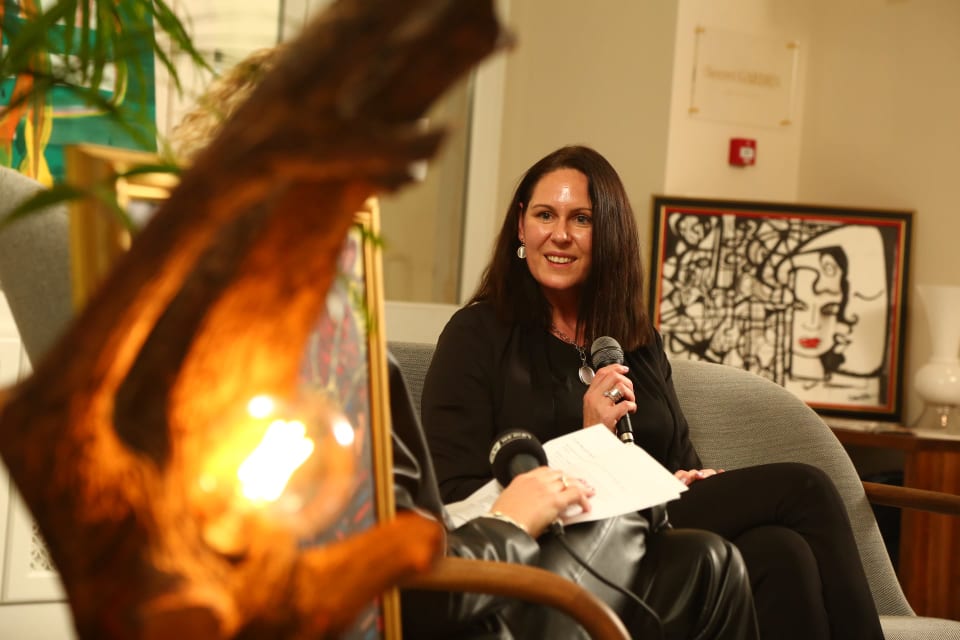
Cornelia stressed the importance of following your dreams and building many empires.
A big take from the second panel touched on why women don't support each other.
"Men naturally support each other. They get together, go for a drink, and talk about everything from life to business and politics. Through that connection, they naturally gain networks. Women aren't doing these things enough - women need to get together once a week to talk, have a drink, and genuinely connect and share with each other."
The final panel featured Larisa Čišić, Janine Widmann, and Rino Medić.
Larisa Čišić, a licensed architect, and Daniel Poelzl, a wood artist, make up the artist/architect duo behind Earth Wind Desire, helping people reconnect to nature and their inner selves. Born in Croatia, Larisa studied architecture in Zagreb and Milan, worked in Japan, and traveled the world to master the skill of designing soulful architecture. Earth Wind Desire uses natural reclaimed materials to create exceptional artwork, architecture, and interior design. Based in Croatia, they endeavor to elevate your surroundings from dull & artificial to calming & natural or create wholly new and unique luxury experiences.
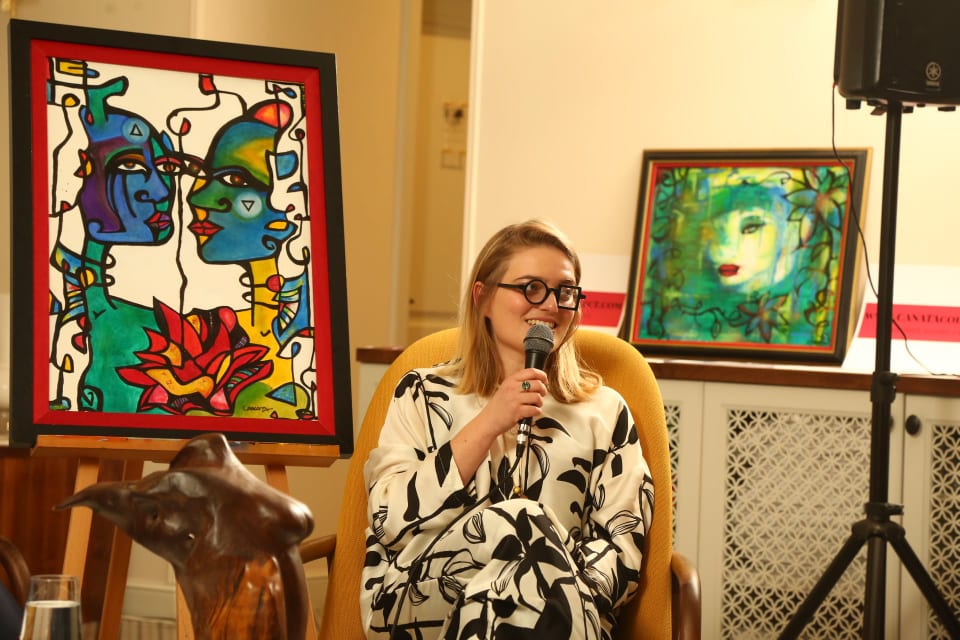
Larisa spoke about how living in Japan and working in the rather militant Japanese business culture differed from Croatia and the lessons she now implements in her business having the experience working abroad.
Janine Widmann is a former Sales Director within the hospitality industry that started her own business during her maternity leave in 2017. She now works with 120 business partners in 6 countries. Her partner in crime is the US Company Jeunesse, founded in 2009 and is now a billion-dollar company that continues to grow worldwide and is expanding further in Europe. Janine focuses her entire business on starting a new start-up every day, together with a prospect. She helps implement essential processes to support the latest startup to be successful.
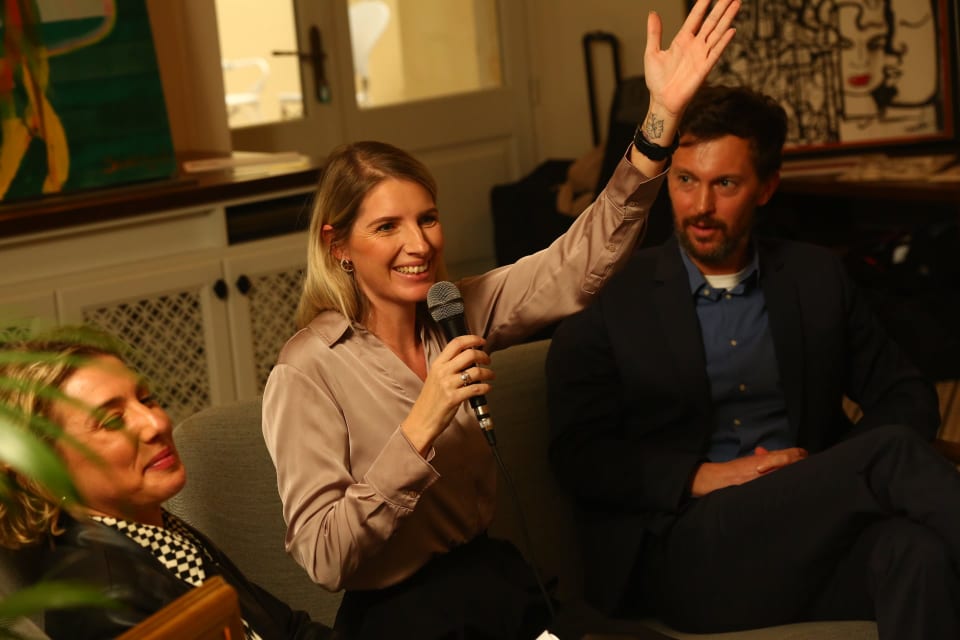
Janine stressed the importance of celebrating your achievements, not being humble about your success, how it is more important now than ever not to be entirely dependent on one income - and that it's okay to make more money than your husband!
The final panelist and only male speaker was Rino Medić. Originally from Mostar, Rino received his MBA in marketing from the Zagreb School of Economics and Management in 2009. Rino earned his Ph.D. from the Faculty of Economics in Osijek last year with the thesis “The Role of Volunteering in Remote Communities” under the mentorship of professor Dan Ebener from St. Ambrose University.
Rino has worked for 13 years in publishing and education as a key account manager, event manager, project manager, and head of publishing and has led several exciting projects. He was a member of the program and organization committee of the WinDays Business Conferences, International Conference on Women in the Film Industry, and the Conference on Croatian Film Heritage. He is currently a member of the program and organization committee at the Mediterranean Islands Conference on Vis and the Creative Future Insights Conference in Zagreb. Rino has attended many educational programs and is the author of a few scientific articles and book chapters. In addition, he is an editor of Conference Proceedings from two international scientific conferences, and even a former athlete with many honors and awards.
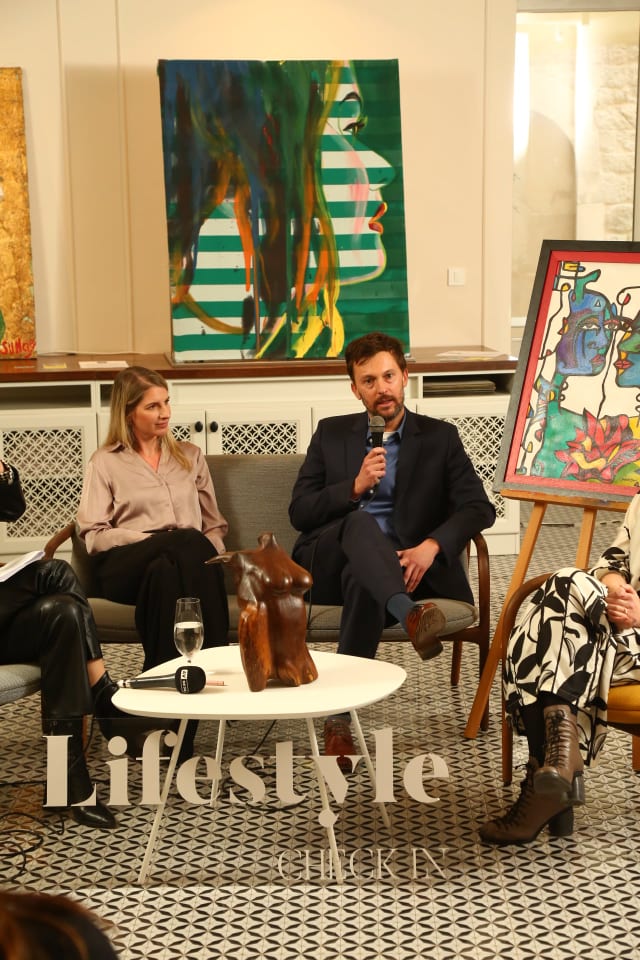
Rino shared a personal story about collectivism versus individualism for sustainable growth.
Music and Artists:
Michelle Rowsell
Originally from the small island of Jersey, Michelle’s love of traveling upon the open waters ultimately brought her to Split. Michelle’s background and training are in theatre, contributing to her diverse musical taste, spanning from old classics by Sam Cooke and The Shirelles to contemporary pop-rock songs performed in a stripped-back, acoustic style.
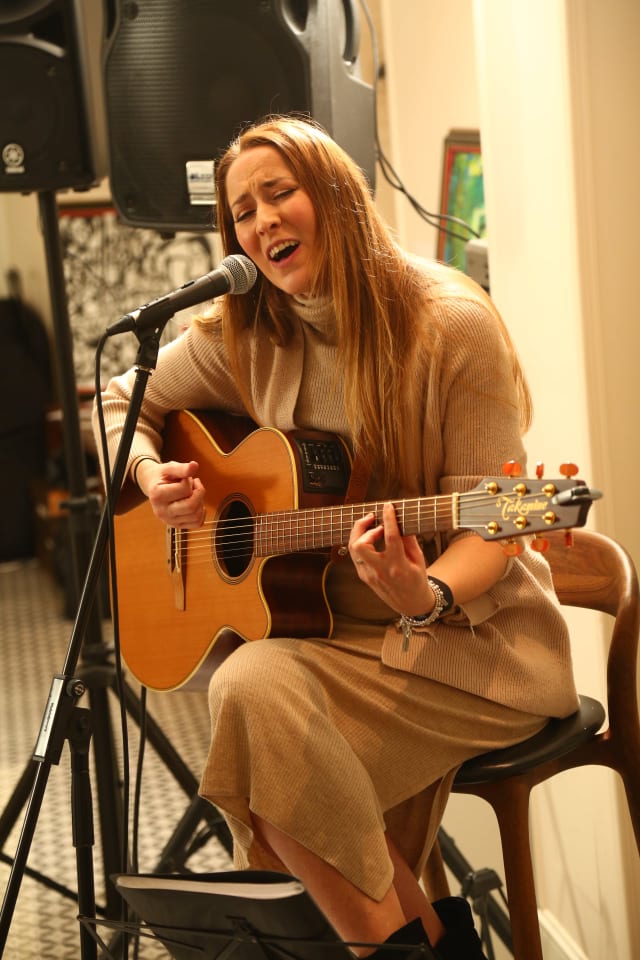
Sunčica Kuzmanić Perišin Tomljanović
Croatian-born, Suncica Kuzmanic Perišin Tomljanović is an international artist with a worldly soul. Sunci studied in London, graduated in fine arts at St. Martins College of art & design, lived in Rome, and has exhibited in Italy, London, New York, Mexico, Paris, and Istanbul. Her collectors are from all walks of life and all parts of the world.

While Sunci works with many themes and painting mediums, performance portraits are at the center of her work, usually working with watercolors or oil on canvas. Suncica was born drawing and painting, but only after seeing Andy Warhol’s portrait of Mick Jagger at 16 that she fell in love with portraits. Sunci has experimented with portraits and collected people and stories ever since. Sunci’s portraits and works share the same element of interaction – in person or remotely; this ‘live element’ is essential to her work. However, Sunci’s true magic lies in her ability to connect with her client, dive into their world and create from this space, bringing an energetic element to each painting.
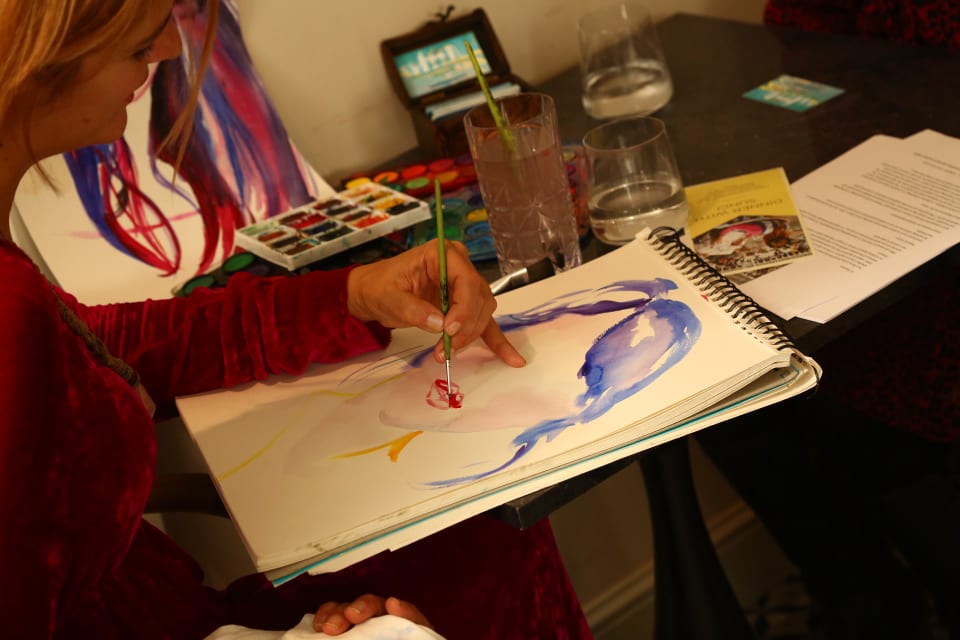
Esther Canata
Esther Canata is a former stage and screen actress, singer-songwriter, poet, and self-taught visual artist. Esther was born and raised in New Jersey to an Italian family with Irish and South American roots. She studied the arts through high school and continued her creative growth to NYC where she worked as an artist model and studio apprentice at the School of Visual Arts for two years. Esther partook in various performative and visual works, aligning with street artists, gallerists, musicians, filmmakers, and other creatives in downtown Manhattan’s underground music and arts scene. A multicultural, tough-love childhood combined with leaving home at a very young age armed Esther with a natural street edge – an artful arsenal – baring many layers of life fully lived, helping cultivate her signature style. Esther’s approach is authentic, a stream of conscious abstract expressionism. Esther plays in mixed-mediums, and her style is influenced by street art and great masters such as Basquiat, Picasso, Chagall, Miro, and Klimt. Her work is emotionally charged, moody, complex, and empowering – embodying femininity, sensuality, diversity, and soulful depth of character.
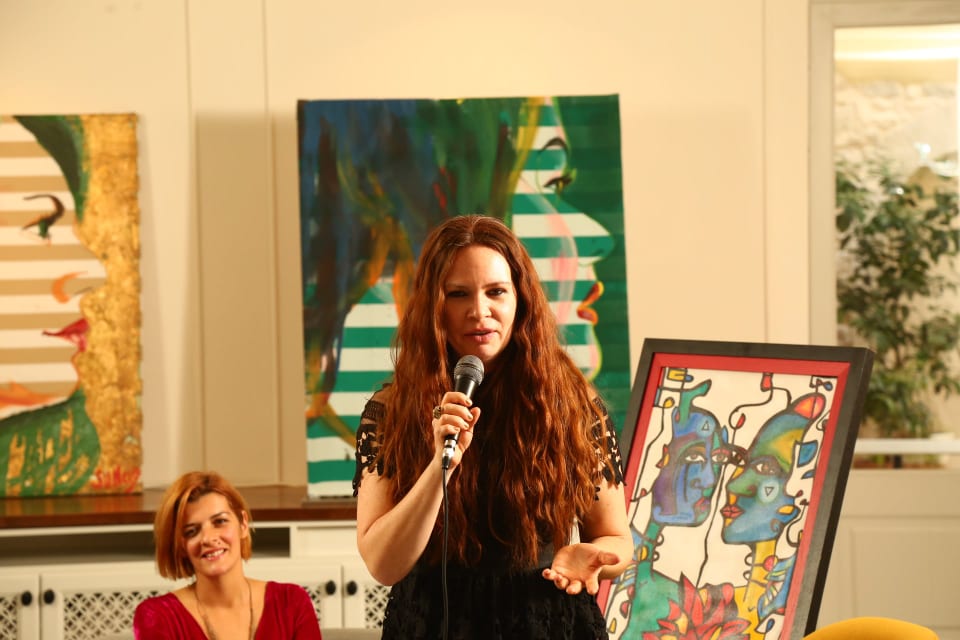
Esther has exhibited through New York, Miami, LA, and Europe. As an emerging international artist, some career highlights include her solo exhibit entitled “ELEMENTAL” at the Museum of Trogir in Croatia and ART BASEL Miami as a featured artist in the ARTBOX. In addition, private collectors have exhibited her work in their homes, hotels, restaurants, and workspaces.
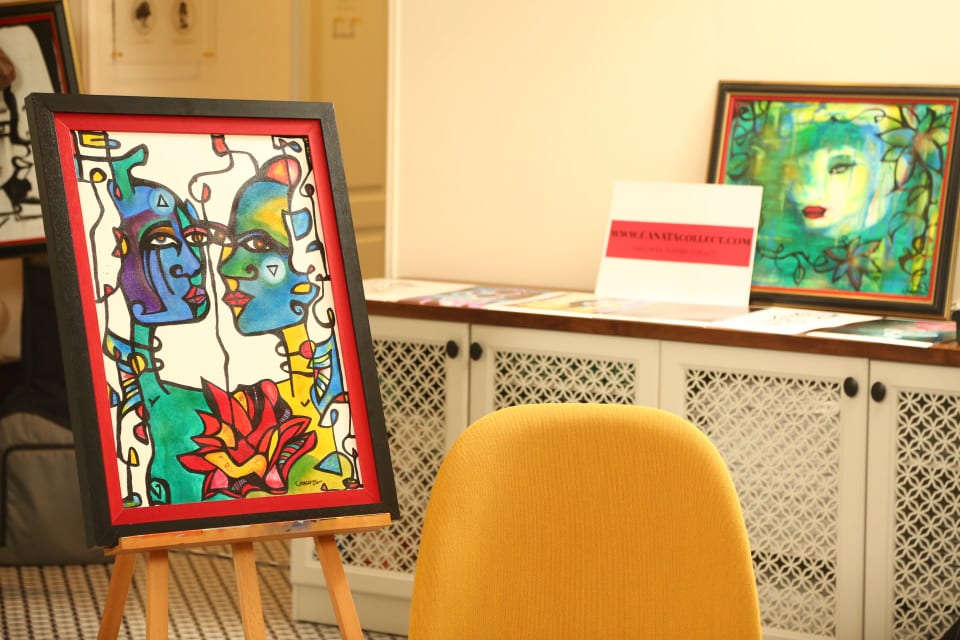
The event was sponsored by the Central Dalmatia County Tourist Board and Amarea Travel, which offered a guided city tour after the event. Journalists attended an elegant dinner at Zrno Soli in Split on Thursday evening, sponsored by the Central Dalmatia County Tourist Board.
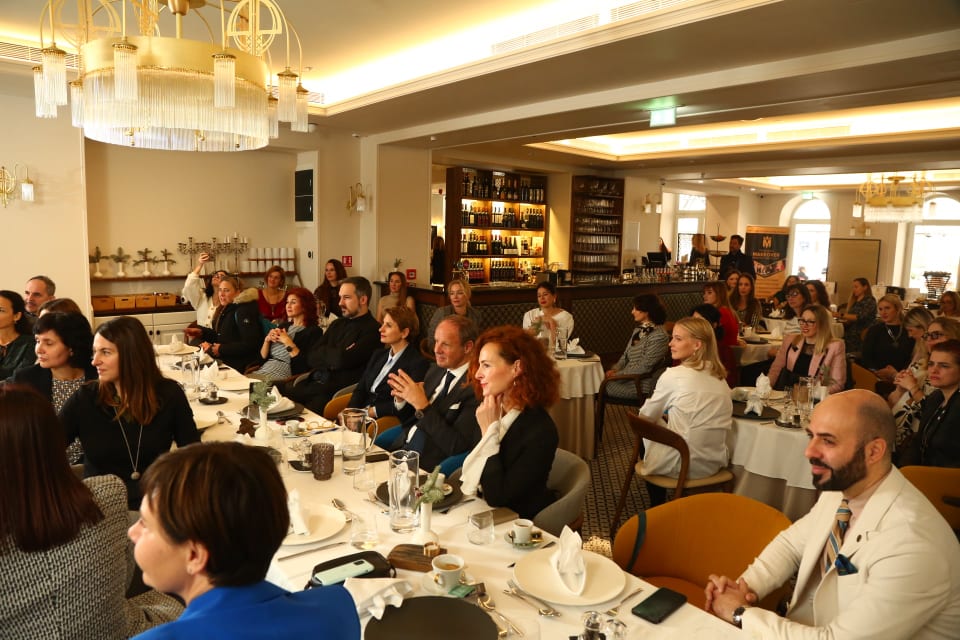
More information about upcoming events can be found here: https://lifestylecheckin.com/
All photos by Maksim Bašić
For more, check out our dedicated lifestyle section.
From Diocletian's Palace to Poljud, Split Tourist Board Presents 360-degree Split Virtual Tour
January 20, 2022 - The Split Tourist Board has presented a 360-degree Split virtual tour on Wednesday, allowing those near and far to explore the city's top attractions.
The Split Tourist Board has announced a new virtual tour that presents Split through a modern and interactive visual display. The project was realized in cooperation with the L33T digital marketing agency, and the City of Split, Split museums and other cultural institutions in Split participated in the project.
"These are 188 virtual panoramas, produced from 17,600 photos taken from the air and the ground so that they ultimately have a resolution of more than 230 MP (megapixels) which allows the visitor to enlarge content and view every detail of the scene. On the other hand, the HDR production technique guarantees a crystal clear image and a huge amount of detail. The virtual walk also contains interesting short texts in Croatian and English, which additionally attract visitors and inform them about the main locations," explained the Split Tourist Board.
They add that virtual walks are made in HTML5 technology that works on all platforms and devices without any application installation and the like, but directly through a web browser.
"The time of the pandemic further strengthened the importance of applying technology in the promotion of the destination, so with this project, we wanted to bring all potential tourists even closer to the beauties of Split to choose our city for their long-awaited vacation, but also to present it to those currently unable to come to Split. This is one of our projects by which we follow the world trends in destination marketing management, and we believe that it will contribute to the realization of a successful tourist year," said Alijana Vukšić, director of the Split Tourist Board.
You can enjoy a virtual walk through sunny Split and explore the beautiful details of Diocletian's Palace and more at 360.visitsplit.com.
Source: Dalmatinski Portal
For more, make sure to check out our dedicated travel section.
2 Polish Lot Zadar Lines, Brussels Airlines Split and Dubrovnik Flights for 2022 Summer
January 19, 2022 - The latest flight news to Croatia as two Polish Lot Zadar lines will return this summer, and Brussels Airlines Split and Dubrovnik flights have been announced from April.
Polish national airline, LOT Polish Airlines, will resume traffic between Zadar and Rzeszow, the largest city in southeastern Poland, in the upcoming summer flight schedule, reports Croatian Aviation.
Namely, LOT has announced on its official website that the Zadar-Rzeszow line, a city in southeastern Poland with just under 200,000 inhabitants, will return this summer. This route was introduced by the Polish airline in the summer of 2020, and regular operations also took place in the summer flight schedule in 2021.
Flights between the two cities will run once a week, every Saturday, starting on June 18, and the Polish airline plans to use DashQ400 aircraft with a capacity of 78 seats.
In addition to the regular route from Rzeszow, LOT Polish Airlines will operate to Zadar Airport on a regular route from its main hub - Warsaw.
Flights between Warsaw and Zadar should start on Saturday, April 30. Larger capacity aircraft, such as the Embraer E195, which has a total of 112 seats will operate on this route.
Like other airlines, LOT Polish Airlines is currently working on finalizing the summer flight schedule, so in the coming weeks, we will know the official 2022 summer flight schedule.
Furthermore, Croatian Aviation reports that Brussels Airlines has announced its 2022 summer flight schedule, which includes two Croatian airports - Split and Dubrovnik.
Although the airline was expected to increase the number of weekly rotations to Croatia, judging by the published schedule for the summer season, this will not happen.
Namely, the Brussels - Split - Brussels line has been announced from Saturday, April 23 to the very end of the summer flight schedule, Saturday, October 29. Two flights a week are currently announced on Saturdays, both on Saturdays, offering 642 seats on its A319 and A320 aircraft on a weekly basis between the two cities.
The Brussels - Dubrovnik - Brussels line is on sale from April 2, and flights are announced once a week, also on Saturdays. Unlike flights to Split, the route to Dubrovnik should run until October 1. Airbus A319 aircraft with a capacity of 141 seats in the passenger cabin has been announced between Brussels and Dubrovnik.
Brussels Airlines has previously confirmed that it will not return to Zagreb International Airport, which was expected given that Ryanair has introduced a regular route between Brussels Charleroi Airport and Zagreb, and Croatia Airlines operates from the main Belgian airport from Zagreb. This year, Brussels does not plan to operate to Zadar Airport, but only to keep seasonal operations to Split and Dubrovnik.
For more on flights to Croatia and other travel announcements, make sure to check out our dedicated travel section.
Women Entrepreneurs Check In: A Stylish Networking Event in Split
January 17, 2022 - The first Women Entrepreneurs Check In will be held at Heritage Hotel Santa Lucia in Split at 11:30 am on Thursday, January 20. A look at what's in store.
The first Women Entrepreneurs Check In is set to be the ultimate networking event for anyone interested in lifestyle and new business connections, all while indulging in a tasty brunch dressed up in stylish attire.
The Women's Entrepreneurs Check-in is organized under the Lifestyle Check-in brand, which organizes a series of B2B & B2C events focused on international fashion, beauty, and lifestyle companies, held in mesmerizing venues such as galleries, yachts, and hotels. Thursday's event is thus held at Kavana Central, part of the chic Heritage Hotel Santa Lucia, located at Narodni trg 1 in Split.
The Women Entrepreneurs Check In aims to raise awareness about women entrepreneurs and affirm women’s role in the Croatian and Dalmatian economies. Speakers and journalists from Croatia, Austria, Italy, and Romania will join the event through a panel discussion about women's entrepreneurship to celebrate great business minds and up-and-coming entrepreneurs while highlighting the influential role women play in the business community.
The opening words will be shared by Joze Tomas, Director of the Croatian Chamber of Commerce - Split County Chamber, and Nevena Cikes, manager of Heritage Hotel Santa Lucia.

Panel speakers include Tash Pericic (Connection, Collaboration & Community), Sara Miante (Social Entrepreneurship), Cornelia Rieger (Design the Future), Rino Medic (Collectivism Vs. Individualism for Sustainable Growth), Hildegard Brandl (Green Village / a project in cooperation with Charlie Ottely), Barbara Markovic (Luxury Tourism), and Janine Widmann (Start-ups).
Earth Wind Desire is a special touch to the event, an artist/architect duo helping people reconnect to nature and their inner self. It is founded by Larisa Cisic, licensed architect, and Daniel Poelzl, wood artist. Based in Croatia, the couple uses reclaimed materials found in nature to create exceptional artwork, architecture, and interior design.
Singer Michelle Rowsell will perform during the panel breaks, bringing a diverse musical taste spanning from old classics by Sam Cooke and The Shirelles to modern pop songs performed in a stripped-back, acoustic style. International artist Suncica Kuzmanic Perisin Tomljanovic will conduct live portrait sessions, while Esther Canata will showcase her emotionally charged, moody, complex, and empowering artwork, embodying femininity, sensuality, diversity, and soulful depth of character.
Poliklinika MakeOver will spoil guests with a "Beauty Corner" and reveal the newest treatments in the world of esthetics, and Pierre Lang jewelry from Austria will be on display.
The event is sponsored by the Central Dalmatia County Tourist Board and Amarea Travel, which will offer a city tour with a personal guide after the event.
On Thursday evening, journalists are invited to attend an elegant dinner at Zrno Soli in Split, sponsored by the Central Dalmatia County Tourist Board.
A Covid passport, negative PCR or antigen test, or COVID-19 recovery certificate in the last six months is required to attend the event.
Tickets & more information: monica@lifestylecheckin.com or https://lifestylecheckin.com/
For more, check out our dedicated lifestyle section.
Bagatin Global Anti-Aging Treatment: For Flawless Skin Even During Split Bura
January 16, 2022 - How the Bagatin global anti-aging treatment brought life back to my bura-broken skin in Split.
There are several reasons why Bagatin Polyclinic is the best.
And it's not just because they were named the International Cosmetic Surgery Clinic of the Year at the prestigious IMTJ. Or that they became the first clinic in Croatia and only the 65th in the world to receive the coveted TEMOS Accreditation - in the fields of Medical Tourism Excellence and Quality of International Patient Care. Or that 11 Bagatin Clinics’ doctors made the list of best doctors in 2018 chosen by patients from all over Croatia (najdoktor.com).
Or even because Bagatin Clinic was named the leading dermatology clinic in Europe according to the analysis of European dermatology clinics, as compiled by Global Clinic Rating – an international accreditation body for medical institutions.
The Bagatin success story is evident in many ways, but perhaps best shown in how it grew from a small Bagatin brothers' operation with a turnover of only 30,000 euro offering just aesthetic surgery in 2008, to over 100 employees in 2018 and revenues of 5.5 million euro with four departments (and 120 employees in 2019).
And once you finally visit the Bagatin Polyclinic, all of these accolades make a lot more sense.
While I have written about Bagatin's honors over the years, I first visited the Split clinic late last year after a skin flare-up prompted me to take a deeper look into what was going on under the surface - and the VISIA Skin Analysis was just what I needed.
Whether I left the appointment happy or not, I can't say, but that had nothing to do with the standout experience itself. However, learning that only 1% of my skin was not inflamed, my rosacea is off the charts, and the 2+ liters of water I drink a day is doing nothing for my dehydration was precisely the wake-up call needed to kick my skin into shape. From that point on, I was dedicated to investing in my skin health and was grateful for the treatment map medical cosmetologist Daniela Šestan personalized for me.
Now that the holidays (and excessive eating and drinking) are over, I took the first step to new skin with the Reviderm global anti-aging treatment earlier this week. And it could not have come at a better time.
I, fortunately, made an appointment at Bagatin on the final day of bura in Split last week.
My skin - parched. My lips - cracked. My broken capillaries - fresh.
I needed rehydration - and fast.
I had no idea what to expect other than that I needed to spare an hour and a half for the treatment. Professional as can be, Daniela promptly greeted me in the Bagatin waiting room right on schedule to begin.
"You don't need to do anything other than relax," she said, which are words I rarely hear, so I made sure to make the most of it.
The treatment began with Daniela cleansing and cleaning my face with massage-like strokes that almost had me asleep within the first 5 minutes of the treatment! After a thorough cleaning, Daniela used an ultra-light enzyme scrub so as not to damage my skin any more than the wind already had. After a gentle exfoliation, it was time for mild microdermabrasion, which Daniela ensured would not hurt, nor would it be too harsh for my skin type. You could really feel the crystals working off the dead skin cells, which in turn improves the appearance of sun damage, wrinkles, fine lines, age spots, and acne scarring.
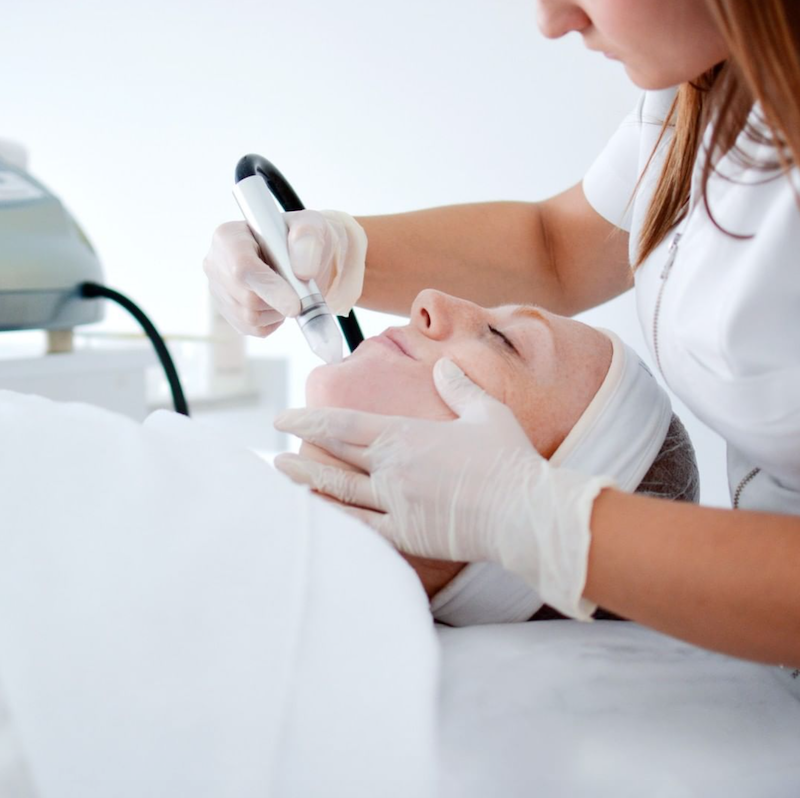
After every section of my skin was thoroughly treated, Daniela used a series of serums, which were penetrated deeper into my skin thanks to ultrasound therapy, which helps the skin create new collagen while improving its firmness and elasticity. The painless ultrasound therapy was done in two 12-minute parts on each side of my face. The warmth from the treatment even helped me nod off a few times! Daniela said my forehead lines reacted very well to the ultrasound, which I could still notice four days later.
The most unique part of the treatment is the final act - the collagen wrap. After more serums were smoothed on my skin, Daniela wrapped my face with pure collagen, covering my eyes and mouth with only open space over my nostrils to breathe. While this may sound scary, the collagen wrap is activated with a cooling liquid and is kept on for 20 minutes - or 'nap time' as Daniela called it. And I promise you won't remember another time you napped so well.
Daniela finished the treatment with moisturizer and the most important ingredient them all - SPF. An hour and a half later, my skin journey had taken its successful first step. When I looked in the mirror, I noticed a glow I hadn't seen in years, fewer fine lines, and an immense reduction in the redness I've just accepted as the norm. But it doesn't have to be.
As with any treatment plan, dedication is key, and the Bagatin neuroscience treatments are up next in my healing process.
Your skin doesn't have to suffer in Split so long as you have Bagatin around.
You can find all of Bagatin's services on their website.
To read more about lifestyle in Croatia, follow TCN's dedicated page.
Direct Railway Line Between Bjelovar and Split Will Start this Summer
January 14, 2022 - The Bjelovar-Bilogora County has managed to reach an agreement with HŽPP, and Bjelovar will be connected to the Adriatic by a direct railway line for the first time from July 1st, this year.
The seasonal tourist train will run once a day on the route Osijek-Virovitica-Bjelovar-Zagreb-Split, reports HrTurizam.
It will depart from Osijek at 8 pm, in Bjelovar at 11.35 pm, and at its final destination in Split it should arrive at 8.42 am. Return from Split is planned every day at 22.06 hours, the train would arrive in Bjelovar at 8.11 hours, and in Osijek at 11.36 hours. The line will run until August 27.
"The direct railway line that will connect Bjelovar to the Adriatic for the first time is the result of our efforts and talks we started last autumn. We are extremely pleased with the agreement reached with HŽPP and consider it important progress in connecting Bjelovar with other parts of Croatia," said the prefect Marko Marušić, who talked with the representatives of HŽPP about the better connection of Bjelovar with Zagreb and the possibility of introducing a student train from Bjelovar to Zagreb.
Namely, children and students of primary and secondary schools will be able to travel for free, in accordance with the Conclusion of the Government of the Republic of Croatia on the introduction of a pilot project of free public rail transport, which is in force until the end of this year.
Recall, this pilot project includes unlimited daily train journeys from the place of residence to the place of schooling and occasional trips, such as day trips, trips to the doctor, on vacations and other trips in the 2nd class of regular trains.
If you want to learn more about train travel in Croatia, be sure to check Total Croatia's guide HERE. Now available in your language!
For more, make sure to check out our dedicated travel section.
Stormy Winds on the Croatian Coast Tore Down Trees and Electrical Cables
January 12, 2022 - In the past two days, stormy winds on the Croatian coast on Tuesday tore down trees and electrical cables, raised the roofs of houses and overturned vehicles, and some citizens were without electricity for several hours.
HRT News reports that yesterday the County Center 112 Rijeka received several reports of disasters caused by stormy winds in the Primorje-Gorski Kotar County, according to the website of the Directorate of Civil Protection.
In the area of the municipality of Čavle, several telephone poles were broken and a tree fell on the road. In Crikvenica, in King Tomislav Street, the wind blew away part of the tin roof of the family house. A telephone pole in Selce was broken, a tree in the yard of a family house was knocked down in Dramalj, and a truck overturned on a local road in the Kraljevica area. An electric cable fell on the family house in Križišće.
In the area of Rijeka, the tree fell on a personal vehicle in Braće Stipčić Street and in the Orehovica area, and in a warehouse in the port, the wind blew away part of the tin roof. Due to broken poles on the transmission network of Tribalj, Drivenik, and Grižane in Vinodol municipality 1000 users were without electricity from 12:22 pm to 14:26 pm, and in Bribir in Vinodol municipality 200 users from 13:15 pm to 15:14 pm.
In Split-Dalmatia County, the County Center 112 Split received about 20 reports during the day about fallen trees, broken branches, traffic signs, and various objects that fell on the road and obstructed traffic. According to the reports, the competent services were informed. There were no reports of major damage.
In Dubrovnik-Neretva County, the "Dr. Franjo Tuđman" bridge was closed to all traffic due to strong winds from January 10 at 4:50 pm to January 11 at 11:00 am. It was closed again at 3:50 pm, the Civil Protection Directorate reported.
For more about the weather in Croatia, be sure to check Total Croatia's guide.
To read more about lifestyle in Croatia, follow TCN's dedicated page.


